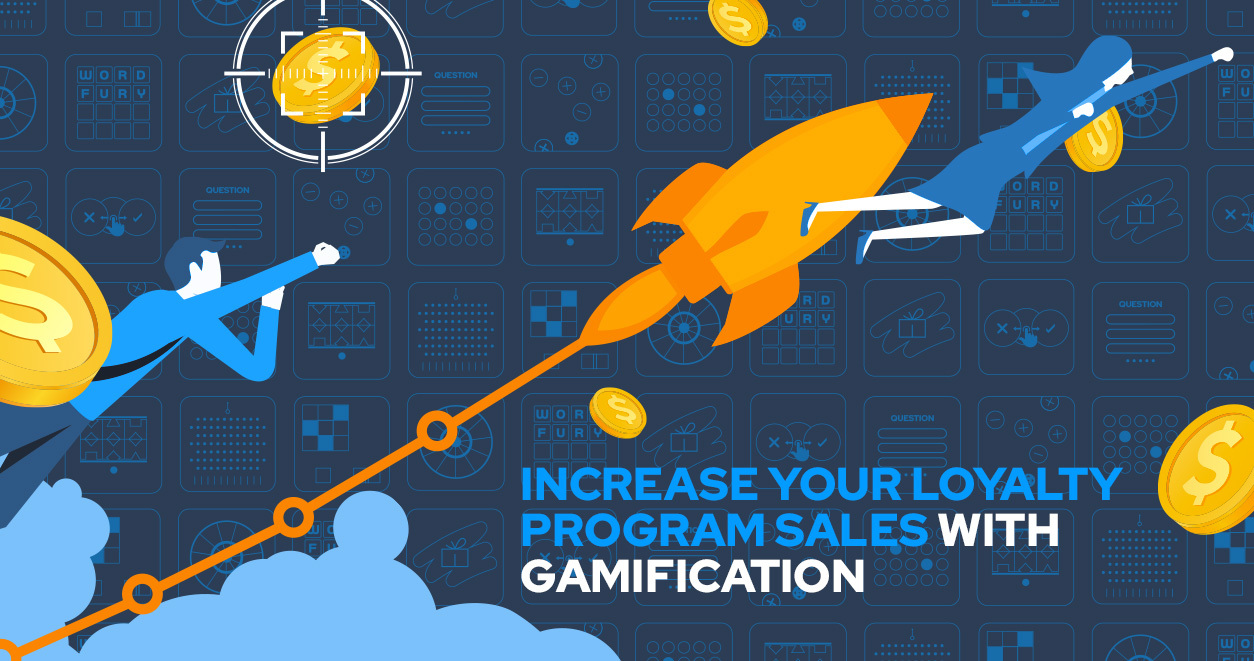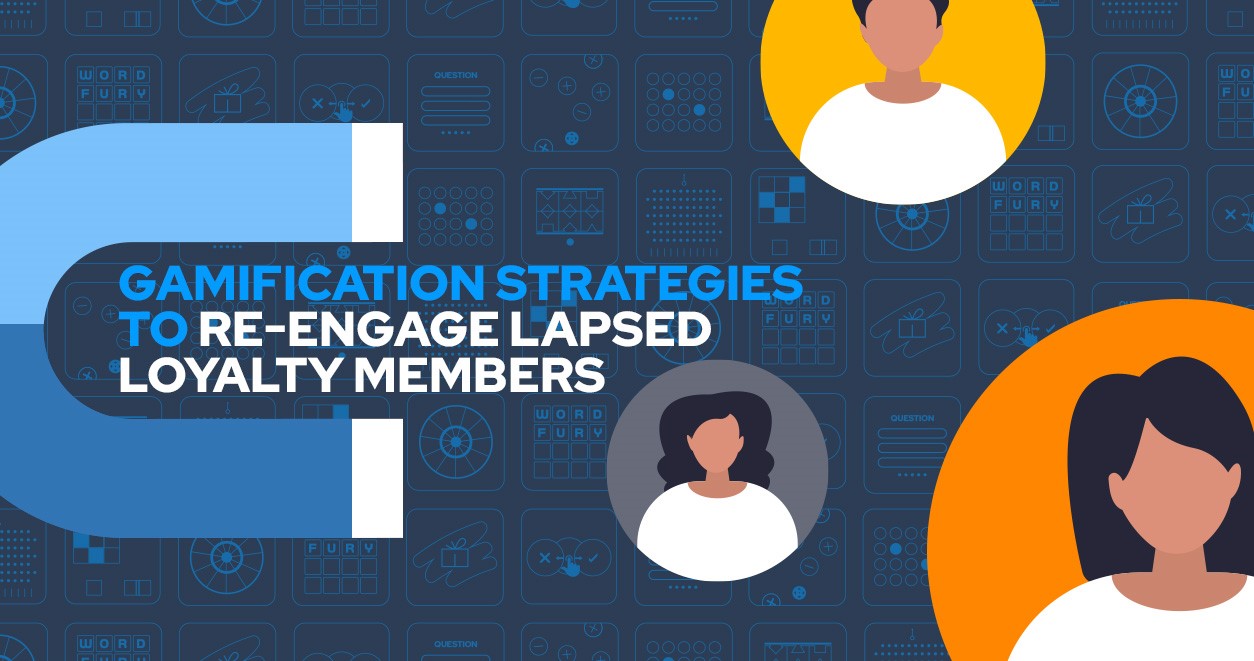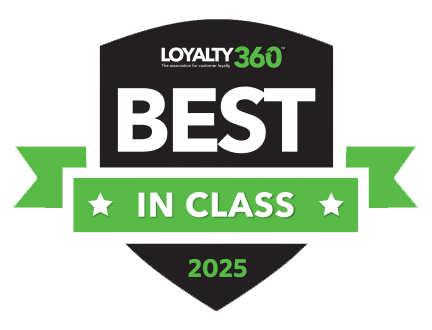For a long time, making use of online third-party data has helped fill a gap for marketers, offering access to detailed information about user behavior. But, as consumers grow increasingly concerned about privacy, marketers are looking for a new approach to gathering and applying data.
We'll explore the importance of gamification for data collection—particularly for gathering valuable first-party and zero-party insights, and how gamifying data collection can uniquely transform tedious transactions into engaging experiences that build trust, deepen customer relationships, and deliver actionable insights you can use to grow your business.
What Is Gamification of Data Collection?
The gamification of data collection uses game elements like challenges, rewards, and competitions to collect data strategically. Gamification transforms outdated methods of collecting data into engaging and rewarding online experiences.
Brands collect valuable insights while providing gamified experiences for customers and prospects. This way, individuals experience a fair value exchange of data for entertainment, rewards, and personalized online experiences.
The Changing Landscape of Data Collection
There is a seismic shift in online marketing, moving away from third-party data—data collected by other organizations—toward first-party and zero-party data.
First-party data represents behavioral information you can observe and collect directly from visitors and customers, and zero-party data, which is often the most lucrative in marketing, is data customers consciously and willingly share with you.
This decrease in third-party data collection is largely due to the rise in strict privacy regulations like GDPR in Europe and CCPA in California, which limit how companies can collect and use consumer data. It is also driven by online browsers that block third-party cookies from collecting a user’s browsing data. Third-party data collection is largely centered around tracking people’s online behavior, often using questionable methods that users aren’t always aware of.
Digital marketers have historically relied upon third-party data to track:
- Browsing behavior
- Purchase history from retail partners
- Data from surveys
- Location data from apps
As this data becomes more difficult to acquire, marketers need new ways to tap into data for improving campaign targeting, messaging, timing, and personalization.
Why First-Party and Zero-Party Data Are So Important
In a privacy-focused world, first-party and zero-party data are the new standard in gathering customer insights.
First-party data provides crucial behavioral insights based on your customers’ actual interactions with your brand. Zero-party data offers information that customers intentionally and proactively share with you, including data about their preferences, intentions, and needs.
Integrating gaming elements into activities not usually associated with games—like surveys, polls, and feedback forms—transforms dull user experiences into compelling, memorable interactions with your brand.
Gamification incorporates earning badges, entertaining challenges, and rewards in exchange for users sharing preferences and other data. The focus shifts from concerns over privacy to a willing exchange of fun and engagement for information.
Integrating Gamification into First-Party and Zero-Party Data
Gamification provides an ideal framework for collecting compliant and ethical customer intelligence, providing opportunities for personalization while also respecting the user’s privacy. In fact, 46% of consumers are more likely to provide personal data through gamified experiences (SuperData Research, "The Gameful Consumer 2023"), and 71.9% of marketers find gamification results in higher-quality consumer data (Antavo, Global Customer Loyalty Report, 2025).
What Data Is Collected in Gamification? The Power of First-Party Data
First-party data is like a digital footprint customers leave when they interact with your brand’s touchpoints, including:
- Website visits
- Clicks
- Time spent on pages
- Purchase history
- Email engagement
Gamification provides brands with authentic customer behaviors, revealing genuine consumer preferences by tracking interactions, time spent on choices, and engagement patterns throughout the customer lifecycle.
Zero-Party Data: The Ultimate Disclosure
Customers willingly and consciously share zero-party data with you, so you can learn from their preferences, purchases, interest in product features, and even their preferred communication options.
Gamification turns zero-party data into the most reliable and accurate form of data you can use, because customers are incentivized to give accurate details, whether to earn discounts, exclusive content, rewards, or other effective motivators.
Gamification also lets you collect progressive data over time, gradually building a comprehensive customer profile with unobtrusive, embedded questions within challenges and other gamified processes.
6 Key Benefits of Capturing Data Through Gamification
The marketplace is flooded with competitors who are stuck in the past. Instead of treating customers like data to be harvested, gamification lets you create new value out of the process, letting your customers know they are seen and heard. The following are six powerful benefits of using gamification to capture data.
- Higher Response Rates: Leverage progress indicators, achievements, rewards, and curiosity to overcome the low completion barrier of traditional forms and surveys.
- Richer, Multidimensional Data: Capture valuable insights from user explicit preferences, implicit behaviors, emotional responses, and decision patterns.
- Stronger Customer Relationships: Build lasting bridges between your brand and your customers, letting them know they are valued and recognized, turning data collection into lasting emotional connections.
- Real-Time Actionable Insights: Eliminate delays between data collection and analysis, gaining immediate feedback streams that let you optimize campaigns and improve future strategies.
- Improved Data Accuracy: Increase the quality of your data using instant wins or sweepstakes that ensure participants provide correct details in exchange for the chance to win prizes.
- Reduced Financial Liability: Use gamification as an elegant solution for reducing the financial burden stemming from unused loyalty points. Gamification is a powerful motivator for redeeming points at low thresholds—all while generating valuable new data.
7 Types of Data Collected through Gamification Campaigns
Using gamification for gathering user information expands the value of your data and increases the number of data points you can use to stay connected to your audience. The following are seven types of data you can gather using gamification.
- User Engagement Data: Gather details about how users engage with your content and use those details to improve their experience. You can use participation rates to learn what percentage of your audience engages with gamified experiences, the amount of time they spend, and how often users return, which deepens your understanding of loyalty.
- Behavioral Data: Learn what actions customers take instead of what they say they do. This data gives you an unfiltered view of preferences that are missed by surveys, allowing you to monitor how users advance through challenges, down to navigation patterns and hesitation points.
- Demographic and Profile Data: Identify your customers and uncover what defines their needs and preferences, without the challenge of lengthy forms and questionnaires. For example, gather first-party data like names and phone numbers, using games like Spin to Win that offer a prize in exchange for the user’s email. Use a SwipeIt game to uncover demographic indicators from the user’s selections, to learn about their age, location, income level, and other valuable data.
- Reward and Incentive Data: Learn about your customers’ motivators to perfect loyalty programs and future promotions. Track the rewards customers claim and measure the effectiveness of varying rewards on their behavior.
- Feedback and Sentiment Data: Discover how your customers feel about their experience interacting with your brand with contextual, pain-free surveys. Gather sentiment data through explicit and implicit signals.
- Conversion and Outcome Data: Track how gamified touchpoints convert to measurable ROIs and KPIs. By setting predetermined objectives, you can measure campaign performance and improve each progressive campaign.
- Customer Retention and Loyalty Program Data: Reveal important details about your brand’s connection to customers. Retaining long-term customers is significantly less expensive than acquiring new ones, so gamification to provide loyal customers engaging experiences helps you maintain those valuable relationships. With gamification, you can measure the frequency and consistency of customer engagement and return rates in order to increase those rates over time. Discover what rewards get redeemed in loyalty programs to generate the highest participation.
How to Utilize Your Collected Data
The most valuable customer data can’t help you grow your business if you don’t know how to strategically apply that information. Using the foundation of powerful data insights, use the following to maximize the value of your customer data.
Data Segmentation and Personalization
Gamification provides the ability to segment customer journeys by behavioral patterns, preferences, and engagement. Use segmented information to direct customers toward unique experiences optimized for their interests. Integrate this data with your CRM and CDP systems for dynamic messaging and targeted offers.
Driving Loyalty Through Data
Build lasting loyalty using personalized experiences from numerous touchpoints. Use interactive quizzes and challenges with loyalty program enrollment, and recognize milestones like birthdays and membership anniversaries.
Create personalized journeys that adapt to loyal customers, tailored to their motivations and preferences.
You Need to Collect Better Data: CataBoom Can Help
CataBoom delivers unmatched expertise in gamification to our clients, with a comprehensive platform of games engineered to collect multiple dimensions of priceless data while maintaining your customers’ active engagement:
- SwipeIt
- Quiz / Trivia
- Watch & Win
- Multi-Level Games
- Incentivized, interactive polling
We help you see higher participation rates, more refined data, and longer customer relationships, all while making it seamless to integrate data with your CRM and CDP systems.
Ready for strategic growth through gamification? Get in touch with us today!


.jpg)





